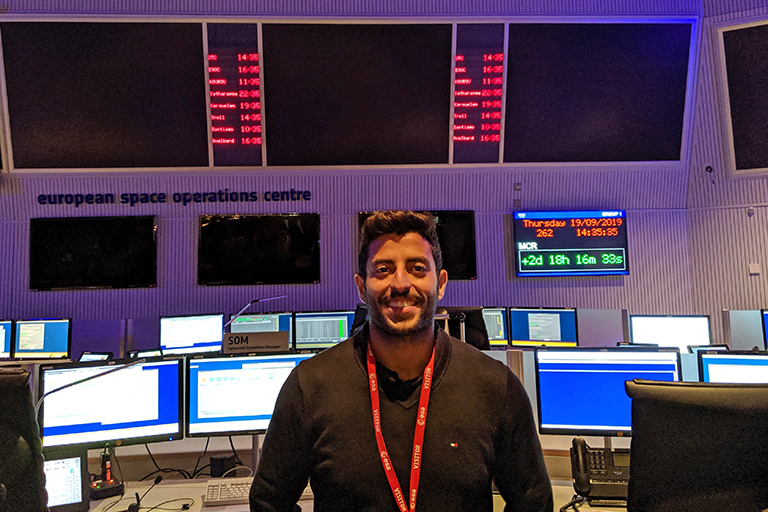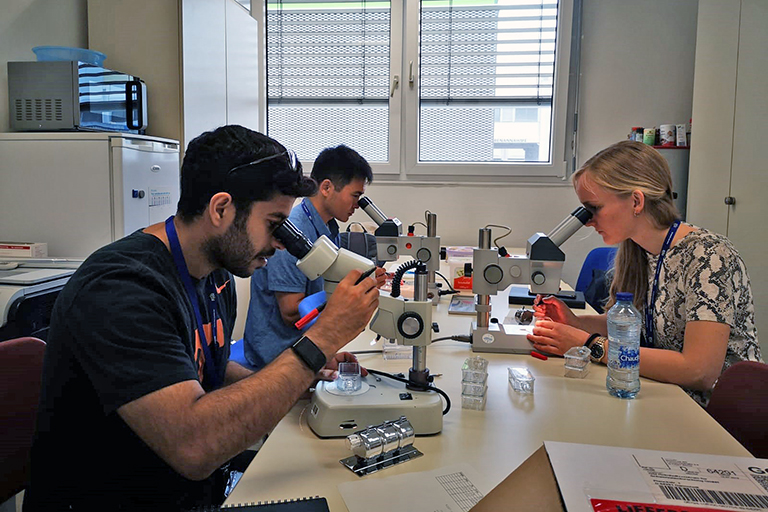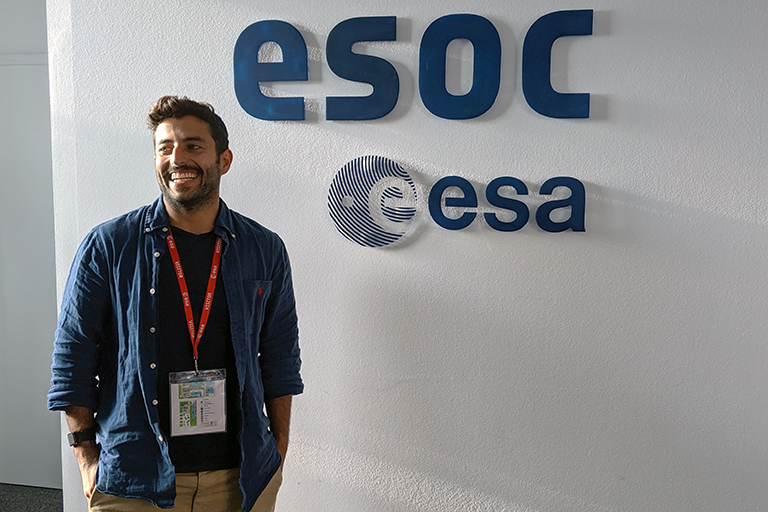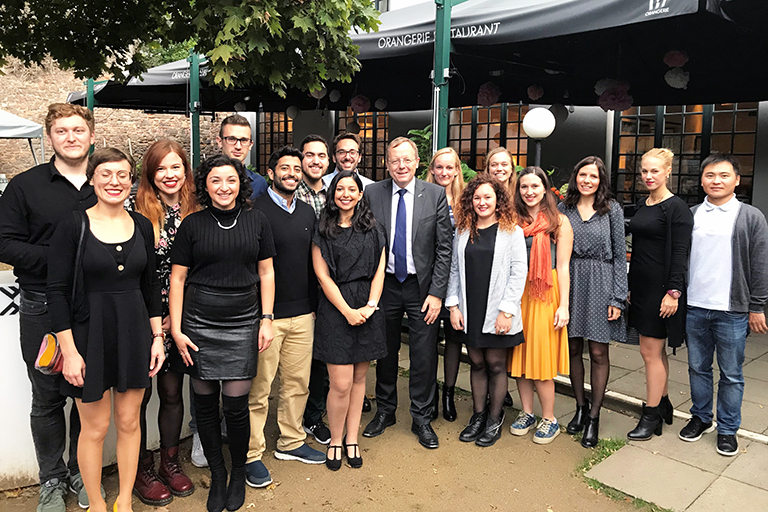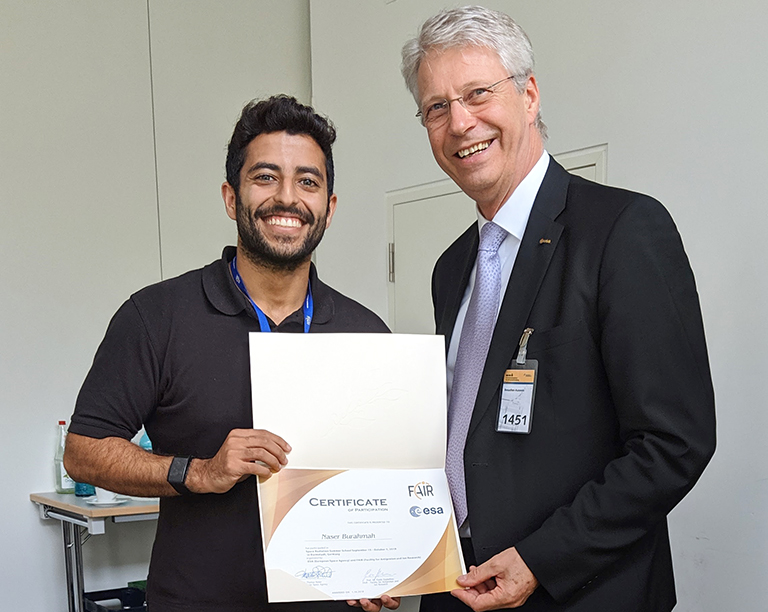
Astronaut Thoman Reiter presents a certificate for participating in the ESA-FAIR Space to Naser Burahmah.
For nuclear engineering doctoral student Naser Burahmah, who is studying medical isotope production, a two-week radiation summer program in Europe was one of the highlights of his life. He found himself one of the few lucky students to take part in such a program.
“I applied but did not even think I would be accepted,” Burahmah said. “I was overwhelmed with happiness and pride that my hard work was acknowledged.”
The European Space Agency (ESA), formed a partnership with the Facility for Antiproton and Ion Research (FAIR), currently being built at the Helmholtz Center for Heavy Ion Research (GSI). The collaboration brings together an accelerator and space agency concerned with developing research on potential materials to help protect humans from cosmic radiation, either for future missions into space, but also right here on earth.
The program accepts 15 members from European states and only three from elsewhere in the world. As the only person from the US in the program, Burahmah was able to get a global perspective like no other, and one that has already served him well since returning.
- In the European Space Operations Center main control room.
- Laboratory activity
- Group photo of the ESA-FAIR students with Johann-Dietrich Worner, ESA director general.
Because the program brings together student researchers from across the sciences, Burahmah was able to learn from peers across the world studying in the fields of biology, medicine, physics, geology, and other scientific disciplines.
All participants received a fundamental understanding of physics and biology in space and foreign environments to better understand how the human body reacts to those environments. Most of the uncertainty on space radiation risk is associated with the limited knowledge of biological effects of cosmic rays, creating a need for new investigations.
For the first week, the group was stationed at ESA’s European Space Operations Center (ESOC), for a variety of all-day lectures. Among the lectures that sparked his interest were those that revealed insights into human physiology and exposure to three main hazards—radiation, stress, and gravity—and in particular, a lecture given by astronaut Thomas Reiter who would answer any question the group had about his experience.
—Naser Burahmah
The second week was a practical hands-on experience where the group got to go to GSI, home to one of the most powerful accelerators in the world and the only place that allows the acceleration of ions for cancer treatment. There, Burahmah got a chance to try experiments outside of his discipline.
“We could choose between three physics experiments and three biology experiments, so since I’ve never been in a biology lab before, that was my first choice,” he said. They assigned students into groups based on their background, so at least one person in the group had a physics background and at least one person had a biology background so they could help each other with the experiments.
At the close of the program, participants were to write the proposal and present it. They could also apply for time using the facility and the particle accelerator to advance their research.
